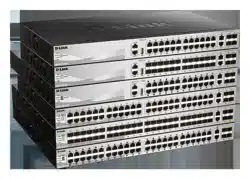Loading ...
Loading ...
Loading ...

DGS-3130 Series Layer 3 Stackable Managed Switch Web UI Reference Guide
137
To view the following window, click L2 Features > STP > STP Port Settings, as shown below:
Figure 5-488 STP Port Settings Window
The fields that can be configured are described below:
Parameter Description
Unit Select the Switch unit that will be used for this configuration here.
From Port - To Port Select the range of ports that will be used for this configuration here.
Cost
Enter the cost value here. This value must be between 1 and 200000000. This
value defines a metric that indicates the relative cost of forwarding packets to
the specified port list. Port cost can be set automatically or as a metric value.
The default value is 0 (auto). Setting 0 for the external cost will automatically
set the speed for forwarding packets to the specified port(s) in the list for
optimal efficiency. The default port cost for a 100Mbps port is 200000, a Gigabit
port is 20000, and a 10 Gigabit port is 2000. The lower the number, the greater
the probability the port will be chosen to forward packets.
State Select to enable or disable the STP port state.
Guard Root Select to enable or disable the Guard Root function.
Link Type Select the Link Type option here. Options to choose from are Auto, P2P, and
Shared. A full-duplex port is considered to have a Point-to-Point (P2P)
connection. Alternatively, a half-duplex port is considered to have a Shared
connection. The port cannot transit into the forwarding state rapidly by setting
the link type to Shared. By default this option is Auto.
Port Fast
Select the Port Fast option here. Options to choose from are Network,
Disabled, and Edge.
• In the Network mode the port will remain in the non-port-fast state for
three seconds. The port will change to the port-fast state if no BPDU is
received and changes to the forwarding state. If the port received the
BPDU later, it will change to the non-port-fast state.
• In the Disable mode, the port will always be in the non-port-fast state. It
will always wait for the forward-time delay to change to the forwarding
state.
• In the Edge mode, the port will directly change to the spanning-tree
forwarding state when a link-up occurs without waiting for the forward-time
Loading ...
Loading ...
Loading ...
